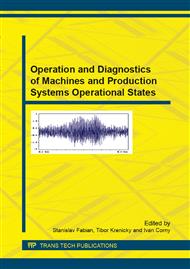p.13
p.19
p.25
p.33
p.39
p.45
p.51
p.57
p.63
Operating Modes of Pneumatic Artificial Muscle Actuator
Abstract:
The paper describes operating modes of the PAM based actuator consisting of two pneumatic artificial muscles (PAMs) in antagonistic connection. The artificial muscles are acting against themselves and resultant position of the actuator is given by equilibrium of their forces according to different pressures in muscles. The main requirement for operation of such pneumatic actuator is uniform movement and accurate arm position control according to input desired variable. There are described in paper operation characteristics of the pneumatic artificial muscle in variable pressure and then operation characteristics of the pneumatic artificial muscle actuator consisting of two muscles in antagonistic connection.
Info:
Periodical:
Pages:
39-44
Citation:
Online since:
February 2013
Authors:
Price:
Сopyright:
© 2013 Trans Tech Publications Ltd. All Rights Reserved
Share:
Citation:


